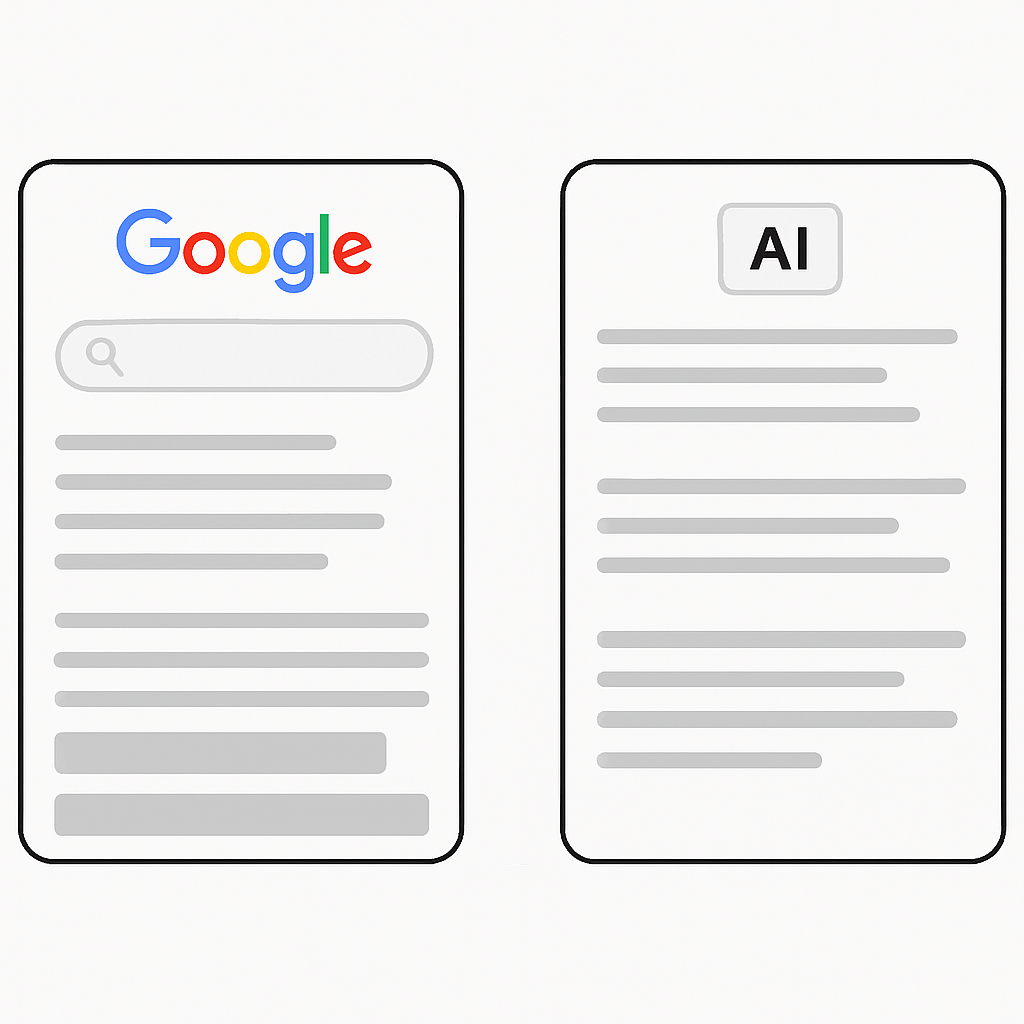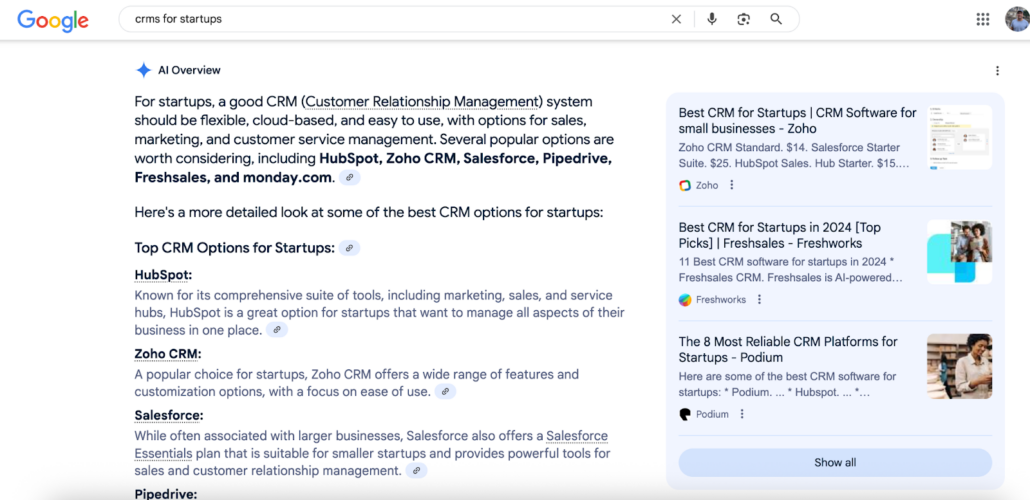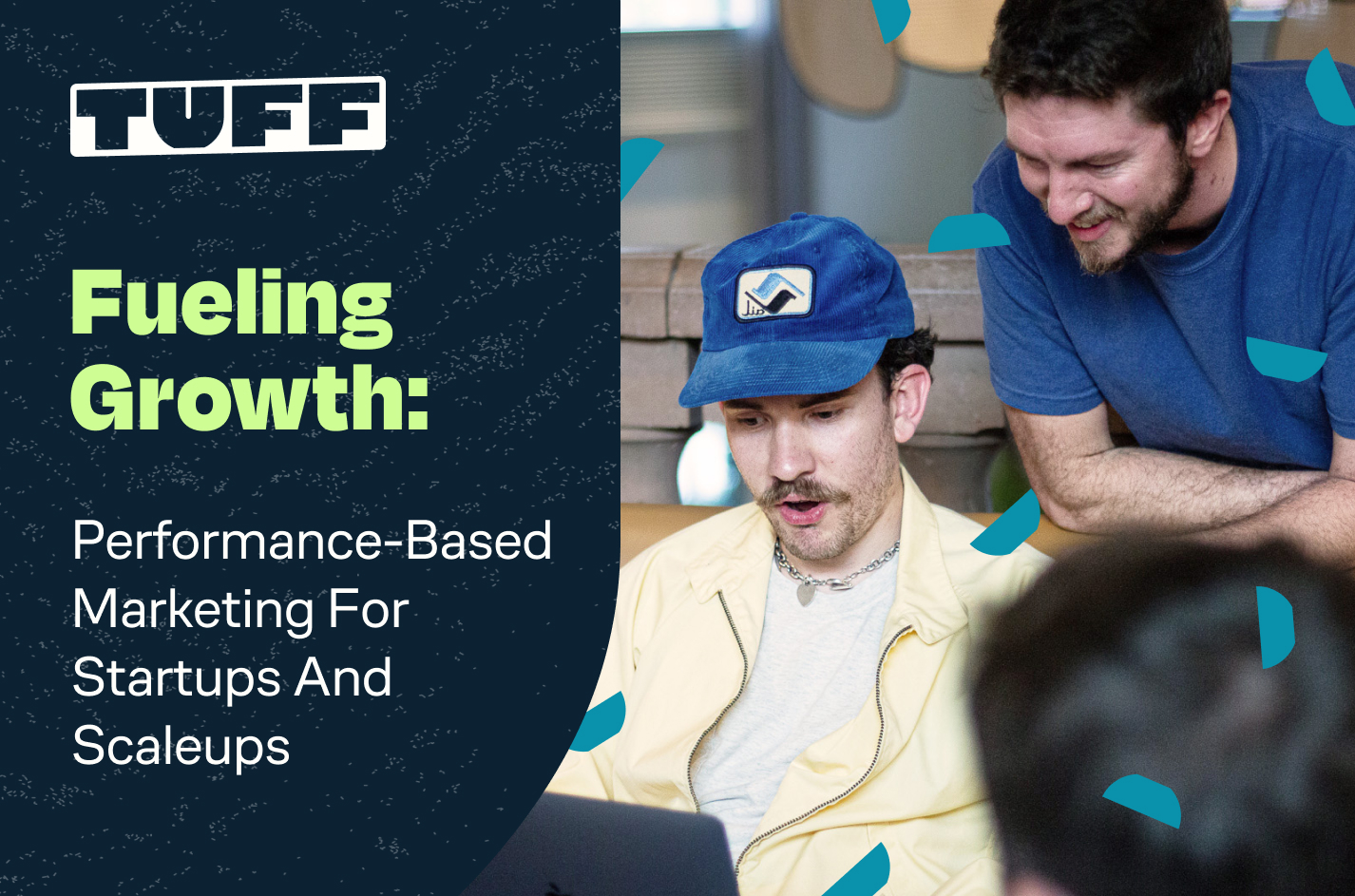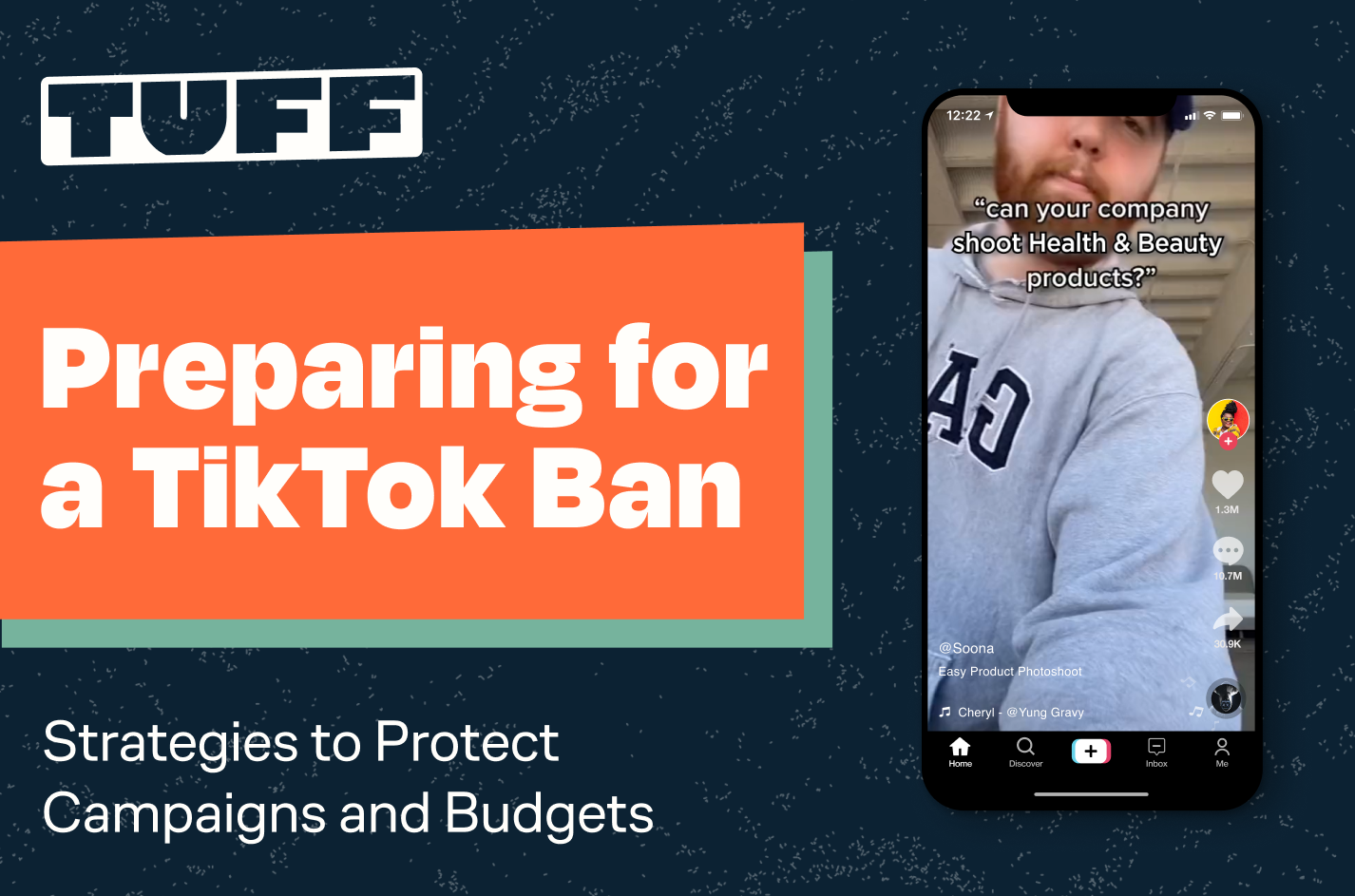GEO, AEO, and LLM SEO: How AI Is Reshaping Search (And What Brands Should Do About It)
We’re living in the AI era. From software and healthcare to data and other industries, AI is fueling technological disruption on a level unseen since the arrival of the personal computer. But beyond the business applications of AI, another revolution is unfolding in the realm of consumer behavior—specifically, search behavior.
In late 2024, Google’s share of the search industry market fell below 90% for the first time in nearly a decade. AI is the culprit. Now, for the first time, users have free access to AI answer engines that not only crawl the open web, but provide custom responses to their queries in real time. Suddenly, the company that invented the modern search engine is now locked in a battle to win eyeballs from LLM tools like ChatGPT, Perplexity, X’s Grok, and many others.
SEO isn’t dead. But search itself — the way we find, vet, and interact with digital information — is being turned on its head. And in the middle of it all? Your brand, which still needs to reach, educate, and persuade potential customers and users in organic-ish ways.
That’s where Generative Engine Optimization comes in — a discipline both similar and unlike SEO in fundamental ways. In this guide, we’ll unpack GEO, explain how it differs from Answer Engine Optimization (AEO) and traditional SEO, and share what smart brands are doing to future-proof their visibility in a post-keyword world.
What is GEO?
Generative Engine Optimization (GEO) is the practice of improving your brand’s visibility in AI engines.
Unlike traditional SEO, where the goal is to rank a website highly on search engine results pages, GEO is about ensuring your brand and its content is referenced in the responses generated by tools like ChatGPT, Perplexity, Bing Copilot, Google’s AI Overviews, and others.
These tools don’t just fetch and display a link to your website — they synthesize. They construct responses in real time based on a blend of training data, live web content, and contextual interpretation of your query.
For brand leaders and marketing teams responsible for converting unaware audiences into qualified prospects, the question is no longer just, “Are we ranking?” It’s “Are we a part of the answer?”
An example of GEO (missing) in action
Now, I personally think it’s defensible — albeit misguided — to read all of the above and think, “so what?” After all, marketing is a field dominated by cycles of hype and decompression. We’re obsessive about the latest thing. And Google’s been around for 20+ years—maybe all that staying power means users will just stick with it.
So to illustrate the point, let’s define GEO by its opposite and share what a lack of LLM visibility actually means for your brand:
- A user asks ChatGPT, “What’s the best B2B CRM for startups?” The answer includes two competitors and a product roundup — but your brand isn’t mentioned.
- A prospective customer types a question into Perplexity instead of Google. The AI cites three articles — none of which are yours — as the foundation of its recommendation.
- A decision-maker using Google SGE gets an AI-generated answer at the top of the page summarizing key takeaways from five sites. Yours isn’t one of them.
In each case the user gets what they need, but your brand is nowhere in sight.
That’s the challenge GEO is designed to solve. It’s not about optimizing for search results — it’s about optimizing for inclusion in AI-generated narratives.
GEO vs. AEO vs. SEO — What’s the Difference?
To understand where GEO fits into the broader picture, it helps to zoom out.
Over the past two decades, SEO has evolved from keyword-stuffing and backlink chases to a more nuanced, intent-driven discipline. But now, AI is accelerating that evolution — and splintering search into multiple surfaces: Ranked results, featured answers, and full-blown generated responses.
Let’s break down the distinctions:
Search Engine Optimization (SEO)
Traditional SEO is about ranking web pages in search engine results to drive organic traffic.
- Goal: Earn clicks from high-ranking links on Google or Bing
- Tactics: Keyword targeting, backlinks, technical site health, content quality
- Success Metric: Organic traffic and page rankings
Many brands should still do SEO — but SERPs are increasingly crowded and click-starved as search engines add AIOs, paid results, and more dynamic content.
Answer Engine Optimization (AEO)
AEO is about structuring your content to be surfaced as the direct answer to a query — whether in a featured snippet, knowledge panel, or voice assistant response.
- Goal: Be the answer, not just a result
- Tactics: Clear formatting (Q&A, bullets, tables), schema markup, concise definitions
- Success Metric: Featured snippet placement, voice response inclusion, zero-click visibility
AEO emerged alongside voice search and smart assistants. It’s about incorporating tiny bits of information that engines can extract instantly.
Generative Engine Optimization (GEO)
GEO focuses on getting your brand included in AI-generated answers — the synthesized, conversational outputs produced by tools like ChatGPT, Perplexity, and Google SGE.
- Goal: Be referenced, cited, or paraphrased in AI-generated responses
- Tactics: Authoritative content, semantic depth, entity, schema markup, presence in trustworthy sources, systematic content freshness
- Success Metric: LLM visibility, brand citations in AI tools, brand sentiment in AI tools
Similar to AEO, GEO is about formatting for extraction. But it’s also about building enough context and credibility that AI tools pull you into the conversation — even if the user never visits your site.
We should note that some brands and search thought leaders still use different terminology for the practice of optimizing content for AI visibility; e.g., it’s not unheard of to read “LLM SEO” out in the wild. At Tuff, we prefer GEO.
Rethinking SEO Strategy in the Age of LLMs
Until recently, SEOs have followed a tried-and-true formula: Publish high-quality content, earn links, rank well, and capture clicks. The idea that every business is a publisher was huge for its time.
But in 2025, that playbook is fraying.
According to SparkToro’s 2024 zero-click search study, nearly 60% of all Google searches now end without a single click — a number that’s been steadily rising year over year.
Why? Because Google has long invested in keeping searchers on its platform rather than referring them to sites directly. Before the AI boom, they did this by answering more queries directly—through featured snippets, maps, and carousels — often satisfying the user’s intent without requiring them to visit a site.
Now, that dynamic is expanding both in Google Search and beyond. Generative AI tools like ChatGPT, Perplexity, and Bing Copilot are starting to function as end destinations themselves — delivering synthesized, citation-lite answers to complex questions. Users don’t need to click through to get the gist. And thanks to LLMs’ ability to summarize, contextualize, and personalize, the barrier to finding information is trending toward zero — and so is the barrier to creating content.
Generative content tools are flooding the internet with basic, surface-level explainers. As a result, top-of-funnel, Wikipedia-style content is rapidly becoming commoditized — and brands that keep churning it out are seeing diminishing returns.
So, where does that leave marketers?
It doesn’t mean you should stop publishing content. But it does mean your content strategy needs to shift — from “publish more” to “publish smarter.”
What brands should do instead:
- Double down on differentiation. Move away from generic explainers and lean into content only you can produce — product deep-dives, original data, founder insights, customer stories, and technical how-tos.
- Refresh content consistently. According to data from AirOps, 95% of all pages cited by ChatGPT were either published or refreshed in the past 10 months.
- Shift down the funnel. Instead of chasing top-of-funnel traffic, use content to nurture evaluation-stage prospects, educate on key pain points, and reinforce product value. SEO is no longer just an awareness channel — it’s a trust-building tool.
- Structure content for AI surfaces. Write content in a way that’s easily extractable and reference-worthy for GEO. That means structuring answers clearly, using schema, and building semantic authority around your niche.
The bottom line: Brands still need to publish — but they need to be strategic about what, where, and why. In an environment where AI answers dominate and clicks are harder to earn, content must do more than fill space. It must anchor your presence across a fragmented, answer-first internet.
Your Next Move: How to Future-Proof Your SEO Strategy
The rules of search are changing — but the goal remains the same: Show up where your audience is looking for answers.
In the era of LLMs, that means expanding your SEO strategy beyond ranking pages to earning presence across traditional search, answer engines, and AI-driven interfaces. Here’s how to get started:
1. Conduct a GEO audit and test your visibility
You can’t be the answer if you’re not formatting for answers.
- Ask ChatGPT, Perplexity, and Bing Copilot industry-specific questions. Is your brand, product, or POV mentioned?
- Check which sources are being cited, and reverse-engineer what they’re doing right.
- Use platforms like Profound to monitor and benchmark your presence across generative engines — even when you’re not getting the click.
- Add schema markup, internal linking, and modular Q&A formatting to make your content snippet- and voice-ready.
2. Build an Answer-First Content Library
Think beyond blog posts. Create layered content assets built for human and machine consumption.
- Modular formats (e.g. quick definitions, comparisons, data tables) make it easier for AIs to pull and summarize.
- Product marketing content — feature breakdowns, use case pages, competitor comparisons — is more defensible and harder to replicate.
- Integrate content with your brand voice, narrative, and hard-to-replicate trust signals.
3. Redefine Your KPIs
Rankings and organic traffic still matter — but they’re no longer the whole story.
- Track AI citation mentions and content visibility across AI platforms.
- Monitor your “answer share” across key question categories in your space.
- Consider SEO performance alongside downstream metrics like demo requests, sales velocity, and pipeline quality.
- Think about visibility as the new ranking.
Build a GEO Strategy in 2025
Search is changing. We’re here to help. Whether you’re looking to expand your content efforts this year, future-proof your existing content library, or figure out a strategy that does a little bit of both, we can help.
Reach out today to kickoff your free GEO strategy call with one of our content strategy experts.






